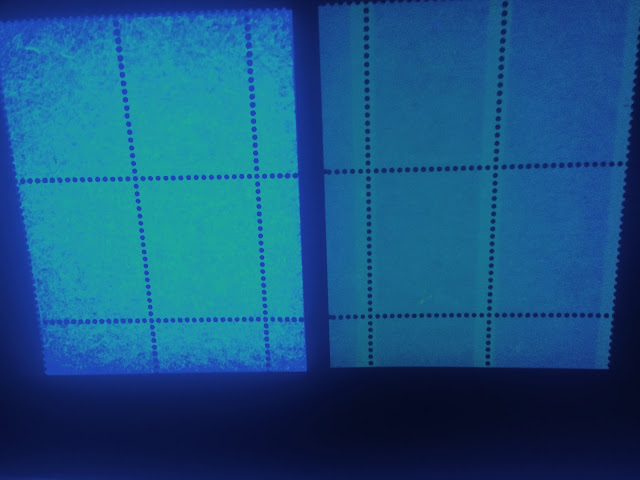Overview
Probably no topic causes more confusion for collectors than the study of paper fluorescence. Many feel that there is too much subjectivity involved in evaluating and studying paper fluorescence and there is a tremendous amount of inconsistency among the stamps listed in Unitrade. Indeed many of the stamps listed are described as having the same degree of fluorescence, but appear completely different under the UV lamp. This makes positive identification of single stamps next to impossible for those unfamiliar with the papers, unless the varieties are unmistakably obvious.
This article will attempt to explain why this confusion arises and break the topic down into more manageable components, so that you will be able to see that the study of paper fluorescence is not impossibly complex. Please note that this is the complicated, more advanced article on this topic. If you have never studied paper fluorescence before, or you do not wish to get too far into detail, then it is recommended that you read the basic version of this article here.
The Cause of Confusion and Basic Grades of Fluorescence
The subject of paper fluorescence is confusing because many of the papers used contain fibres in varying densities that react differently to the UV lamp than the main paper. In addition, the use of paper coatings in the early 1970's has resulted in many papers that give different reactions on the face of the paper from the back.
To begin with it is important to understand the basic levels of fluorescence and what they look like:
- Dead paper (Dead) - 0 on the Irwin scale
- Non-Fluorescent (NF) - 1 on the Irwin scale
- Dull Fluorescent (DF) - 2-3 on the Irwin scale
- Low Fluorescent (LF) - 3-4 on the Irwin scale
- Fluorescent (F) - 5-6 on the Irwin scale
- Medium Fluorescent (MF) - 7-8 on the Irwin scale
- High Fluorescent (HF) - 9-10 on the Irwin scale
- Hibrite (HB) - 11-12 on the Irwin scale
The Centennial specialists Irwin, Keane and Hughes came up with a 0-12 point brightness scale in the early 1970's. The numbers next to each grade represent where on the scale the grade falls.
Dead, Non-fluorescent and Dull Fluorescent Papers
The picture taken with my I-phone camera shows the three lowest grades of paper fluorescence: dead, non-fluorescent (NF) and dull fluorescent (DF):











